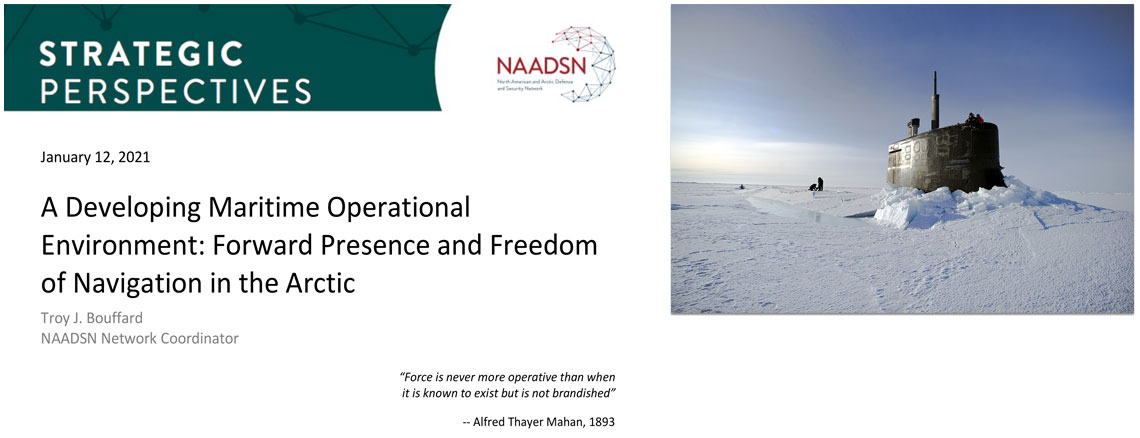Outreach

A Developing Maritime Operational Environment: Forward Presence and Freedom of Navigation in the Arctic
The Arctic states that maintain military forces and alliance memberships also generally
maintain defense-related strategies associated with the Arctic. However, concerns
remain involving the lack of clear synergy that often exists between political (national
security) and defense-focused Arctic national policies. As an example, developing
US Arctic policies indicate national requirements of establishing a strategic Arctic
port(s) as well as progressing toward the US Navy’s surface presence in the Arctic.
Yet, very few studies provides tangible details concerning operational purposes and
criteria. As a result, the practice of military forward presence, especially the principle
involving freedom of navigation, provides an ideal contemporary Arctic (hard) security
issue to examine given the current lack of study. Forward presence and freedom of
navigation represent fundamental aspects that enable force projection, which is a
basic component of any deterrence strategy. Additionally, both forward presence and
freedom of navigation will improve the position of the United States to confront a
significant geopolitical, competitive issue involving the status of Russian and Canadian
Arctic waters. Both Canada and Russia maintain definitions of ‘internal waters’ as
maritime domains under their full sovereign control. Canada’s internal waters are
clearly claimed within a contested straight baseline that envelops the entire archipelago.
For the United States and Canada, the issue of the sovereignty over the waters of
and transit within the archipelago endures under protest, but under amicable arrangements
(particularly the 1988 Canada- US Arctic Cooperation Agreement). With respect to Russia,
the status is unresolved but lacks any manageable agreements and involves far more
conflicting circumstances.


